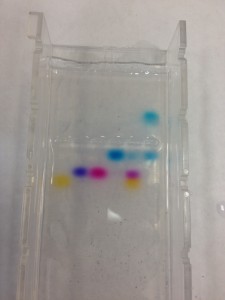Biology 1101/7952 (Extra Credit)
Natasha Decena
Review of Article: ‘‘How to Control an Army of Zombies’’
Provided in the New York Times is an article, written by Carl Zimmer, titled “How to Control an Army of Zombies” that describes numerous parasites that create “zombifying” effects by altering neurotransmitters in the brains of their hosts. The new fascination is not that these zombie causing parasites exist, but rather the methods in which they are allowed to take control over the minds of their hosts. Most of the observation and evidence presented are based on research pertaining to invertebrates, like insect species, since they contain less neurons in their nervous systems as opposed to vertebrates which contain double to triple the amount, making it more difficult to detect parasitic indication in the nervous system. However, mentioned is of one mainly known parasite, called Toxoplasma gondii, known to affect vertebrates, and describes how it goes about invading its host.
Carl Zimmer begins to describe a type of parasitic wasp that takes over a particular species of spider, originating in the rain forests of Costa Rica. What enables the parasite to target the Anelosimus octavius, the spider, is a specific set of genes that is shared between the two. These genes produce proteins that send signals to the brain of the spider to do whatever the parasitic wasp desires. Explained in this instance is that the spider spins a web entirely different to the one it should spin, best suiting for the wasp instead. Once the spider is finished with its duties towards the wasp, it dies, leaving the parasitic wasp to complete its life cycle. In the same context, Baculovirus, a virus deadly towards caterpillar species, also creates a manipulating effect on caterpillars, or insects of similar species; the virus also shares a gene with the species, known as egt. Egt is when there is an encryption to an enzyme that attacks a hormone in the caterpillar, says Dr. David P. Hughes of Penn State University. That signals the caterpillar to stop eating and climb to the tops of trees, where its body dissolves in liquid form, spreading the virus all over the leaves below, restarting the cycle of the Baculovirus once again.
Another parasitic invader included in the article is a thorny-headed worm that operates in the same manipulating conduct; however, this parasite requires that its life cycle be completed by occupying two hosts. The thorny-headed worm lives in microscopic shrimp like specimen called a gammarid. When detecting danger, the gammarid is predisposed to find safety in dark areas underwater; conversely, the worm dictates the gammarid to swim to the surface of the water, exposing it for the consumption of a bird, where it will complete its natural life.
Alternately, vertebrates are also susceptible to the dangers of parasitic invaders, particularly to one known as Toxoplasma gondii. Research made on Toxoplasma gondii has shown that it can reach to the brain cells of its host and form cysts, and is most commonly found it the intestines of an infected cat; it sheds through the feces of cats and can infect humans by handling the infected cat litter. Behavioral changes also occur as a symptom associated with the detection of the parasite. Doctor Ajai Vyas of Nanyang Technological University in Singapore has found evidence done on a research of rats and has explained that the parasite increased testosterone levels in the rats, making them more attractive to female rats; thus, spreading the parasite upon mating. In humans, there is a high risk of the development of schizophrenia and changes in one’s personality.
Shelley Adamo of Dalhousie University in Nova Scotia, co-editor of the Journal of Experimental Biology says that information that has been provided from research is slowly unraveling the complicated biochemistry behind the ways of these parasites. Dr. Adamo also believes that the study from this research, as she refers to as “neuroparasitology”, can best benefit pharmaceutical companies in regards to helping them find new methods of creating effective medicine for mental illnesses.
In closing, it was described that the past decade has been an exciting time for scientists. New data that has been acquired further explains the way in which the parasitic species manages to completely reverse the life cycles of their host, catering to their own needs for survival. Some examples provided showed that these parasites share similar genes with their hosts and are able to send direct signals to the brain assigning tasks, while others manipulate the immune system to attack their prey’s natural defenses. Essentially, Dr. Adamo advocates that something can be learned from these toxic specimens; understanding the biochemistry used by the parasites can serve as an illustration to create improved and more effective medical treatment for mental diseases.
Attached below is the link to the NY Times article:
How to Control an Army of Zombies




